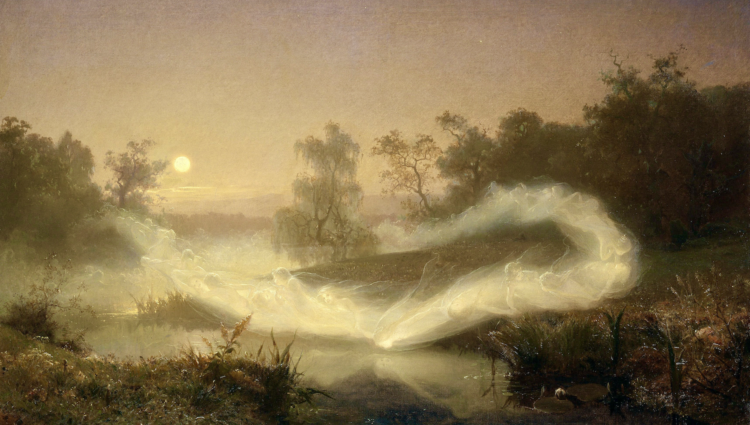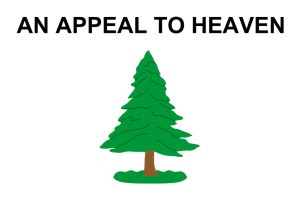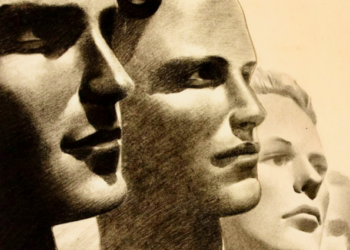Whether they be fairies, gnomes, cryptids, aliens, or elves, what are these creatures about which man has written for centuries? C.S. Lewis explained that the medieval mind understood them to be inhabitants of a kind of middle realm between the physical and the spiritual regions. But is this “Middle Earth” real?
 No matter our chosen belief system—our current metaphysical understanding remains deeply Platonic and binary: There are a physical, material realm, and a spiritual, invisible realm—the realm of the ideal forms. For those with a religious worldview, this is not a problem. Indeed, the concept of one realm that is physical/material here and now, in opposition to a realm that is otherworldly/spiritual there and then, even determines the materialist mindset inasmuch as it provides a rock to kick against—a model to deny and a cosmology to resist.
No matter our chosen belief system—our current metaphysical understanding remains deeply Platonic and binary: There are a physical, material realm, and a spiritual, invisible realm—the realm of the ideal forms. For those with a religious worldview, this is not a problem. Indeed, the concept of one realm that is physical/material here and now, in opposition to a realm that is otherworldly/spiritual there and then, even determines the materialist mindset inasmuch as it provides a rock to kick against—a model to deny and a cosmology to resist.
In one way or other the religious person understands that his religion provides the method that allows the interpenetration of the two realms. Through ritual, magic, faith, sacraments—what have you—he hopes to move from the physical to the spiritual, or prays for the spiritual, transcendent powers to invade or infuse the physical.
The materialist rejects such possibilities, but even in his atheistic materialism he gives a nod to the binary metaphysic. By denying the reality of the transcendent realm he affirms the power of the Platonic, binary model.
Both sides—the materialist and the religious—are faced with a challenge when they must account for those human experiences categorized as paranormal or supernatural. It is worth taking a breath here to distinguish between the paranormal and the supernatural. Often used interchangeably, for students of the subject the terms are not synonymous. A “paranormal” experience is just that: an experience that is outside normal human experiences and understandings. It is an unexplained phenomenon which may or may not be supernatural. So, for example, an encounter with bigfoot or some other cryptid would be paranormal, but not necessarily supernatural.
A supernatural experience, however, demands an explanation that is (by definition) “above or beyond nature.” A genuine miracle would be supernatural because all natural explanations have been ruled out.
When considering unexplained experiences—from ghosts and near-death experiences to psychic phenomena, UAPs and aliens, cryptids, demons, and angels, the religious person has a vocabulary and system of belief that allows for both the paranormal and the supernatural. The materialist not so much. It is easy for the religious person to simply write off all such experiences and encounters as the activity of demons. This, it strikes me, is too simplistic. The materialist, on the other hand, writes such experiences off as simply being natural phenomena for which we do not yet have a rational explanation.
There would seem to be no mutual way forward to a more satisfying explanation for these inexplicable occurrences. But this may be because we are stuck in the essentially Platonic binary metaphysic: There are two realms. The invisible and the invisible. The religious say they sometimes intermingle. The materialist not only says they don’t, but he also denies the reality of the invisible realm.
But what if this classic, binary cosmology is inadequate? C.S. Lewis’ last book The Discarded Image, is worth another look. The book is a detailed description of the cosmology of the medieval period. After explaining the medieval understanding of the heavens and planetary systems, Lewis considers paranormal beings. In chapter six he writes about fairies, but he uses the term “the Longaevi”—a term he took from the fifth-century Neoplatonic philosopher, Martianus Capella, “who mentions ‘dancing companies of Longaevi who haunt woods, glades and groves, and lakes and springs, and brooks; whose names are Pans, Fauns… satyrs, silvans, nymphs.’”
The fifth-century philosopher speaks of paranormal characters from the classical world, but considering that such beings are likely to appear within a cultural language and imagery that we have the language to “see,” in our technological culture these strangers might be aliens, UFOs, or the monsters of our films and science fiction stories.
Whether they be fairies, gnomes, cryptids, aliens, or elves, what are these creatures and in what sense are they “real”? Lewis explains that the medieval mind understood them to be inhabitants of a kind of middle realm between the physical and the spiritual regions. After perusing the literature on the subject, Lewis outlines four theories about their nature.
First, they could be a “third rational species distinct from angels and men.” He quotes a seventeenth-century writer: “Their nature is middle between Heaven and Hell…. They reign in a third kingdom, having no other judgement or doom to expect forever.”
Another medieval writer opines that the Longaevi are demoted angels—a band of spirits who did not totally join with Satan’s rebellion, but who were antagonistic to the Almighty’s reign. They were assigned to a middle realm: a kind of half-existence between angels and men to be relegated to the inferno on doomsday. Some dwell in a middle range of the heavens, some in an in-between earthly realm.
A third theory is that the Longaevi are the dead: ghostly spirits. On death it was supposed that those who did not go to heaven or hell may end up in “fair Elfland”—a middle-earth that is populated with the recent dead or some souls who are thought to be dead but who, in fact, were “taken by the fairies.”
The final opinion is that the Longaevi are demons, and this is the prevailing view from the seventeenth century, as the medieval mindset gave way to the onslaught of both the Protestant Reformation and the subsequent rationalism of the Enlightenment.
The second, third, and fourth options revert to the Platonic binary metaphysical model: These beings are fallen angels, the dead or demons. The first model is the most intriguing, and that is the suggestion that the two-tiered Platonic model is inadequate. We must allow for a third realm—a kind of Middle Earth.
The inhabitants of this realm are neither fully materialistic and physical and thus unable to be scientifically verified, but neither are they pure spirits, like angels and demons. Instead they have a kind of physicality, but one which is only partially linked with our own realm of sense perception. This is why we may be able to encounter them to a certain degree, but we will never capture them. We may see UFOs, for example, but we will never find a crashed spaceship and put it in the NASA museum in Washington. We may see a Yeti footprint in the snows of the Himalayas, but we will never capture one and put it in a zoo.
The beings of this Middle realm—if it exists—may at times be perceived by the mechanisms of our normal sense perception, but more often the encounters take place in that middle realm of psychic awareness: in our dreams, our visions, our imaginations, and our meditations. It is through the unconscious activities of our brain that we are more likely to connect with this Middle Earth.
In puzzling over such paranormal phenomena, the “Middle Earth idea” provides an admittedly ambiguous solution. While it is tantalizing, the religious person will be dis-satisfied because it remains too far outside the boundaries and certainties of defined dogma. Likewise, the materialist will demur because the creatures and experiences of Middle Earth remain outside the definitions of verifiability.
While such a speculation is impossible to verify, it may well be attractive to the fans of fantasy fiction as well as aficionados of speculative science fiction. Are we talking here about parallel universes? Time slips? Alternative realms of reality?
I think we are, and that is why we are eternally intrigued by those inexplicable experiences that remind all of us Horatios that there are more things in heaven and earth than our philosophies have dreamt of.
The Imaginative Conservative applies the principle of appreciation to the discussion of culture and politics as we approach dialogue with magnanimity rather than with mere civility. Will you help us remain a refreshing oasis in the increasingly contentious arena of modern discourse? Please consider donating now.
The featured image is “Dancing Fairies” (1866) by August Malmström, and is in the public domain, courtesy of Wikimedia Commons.











